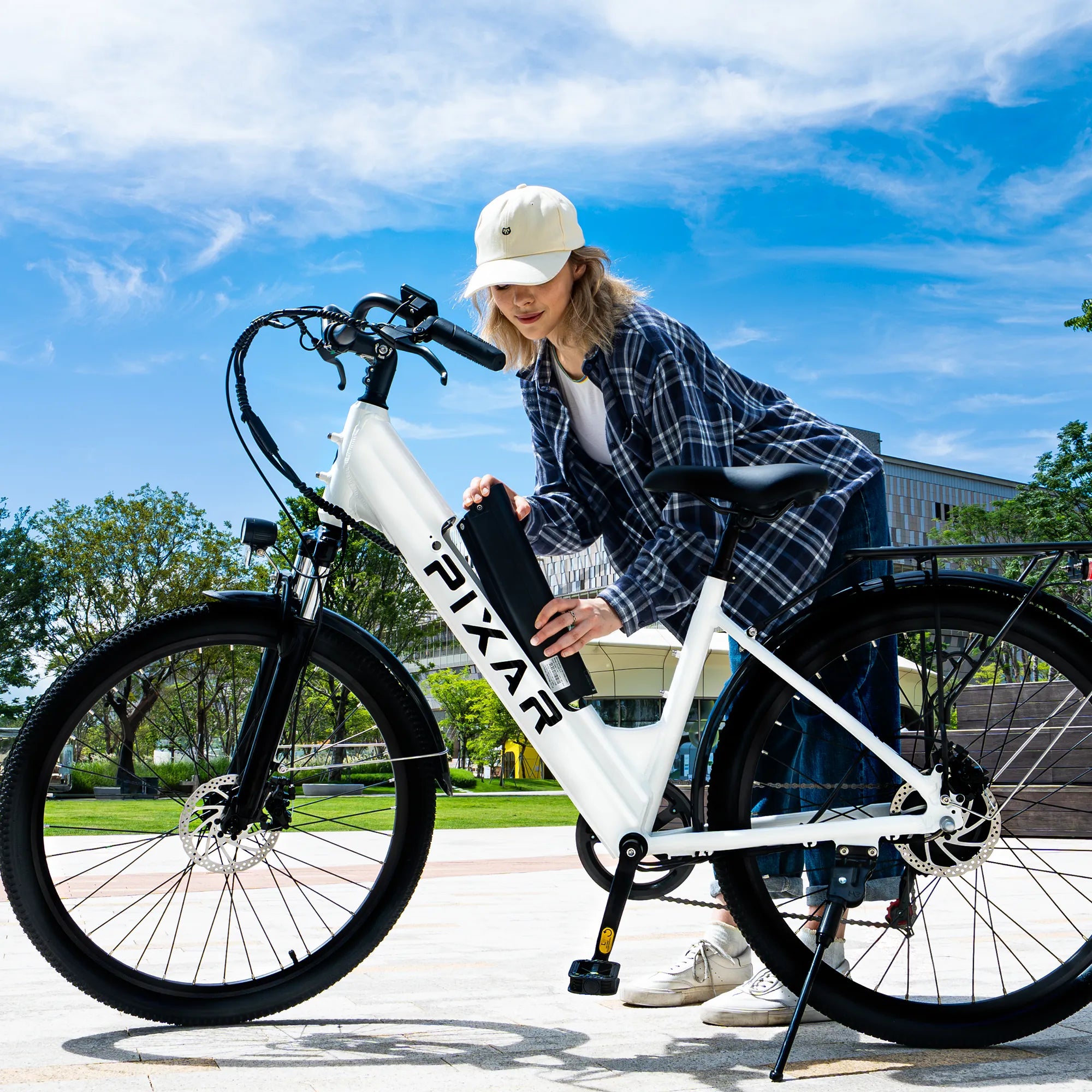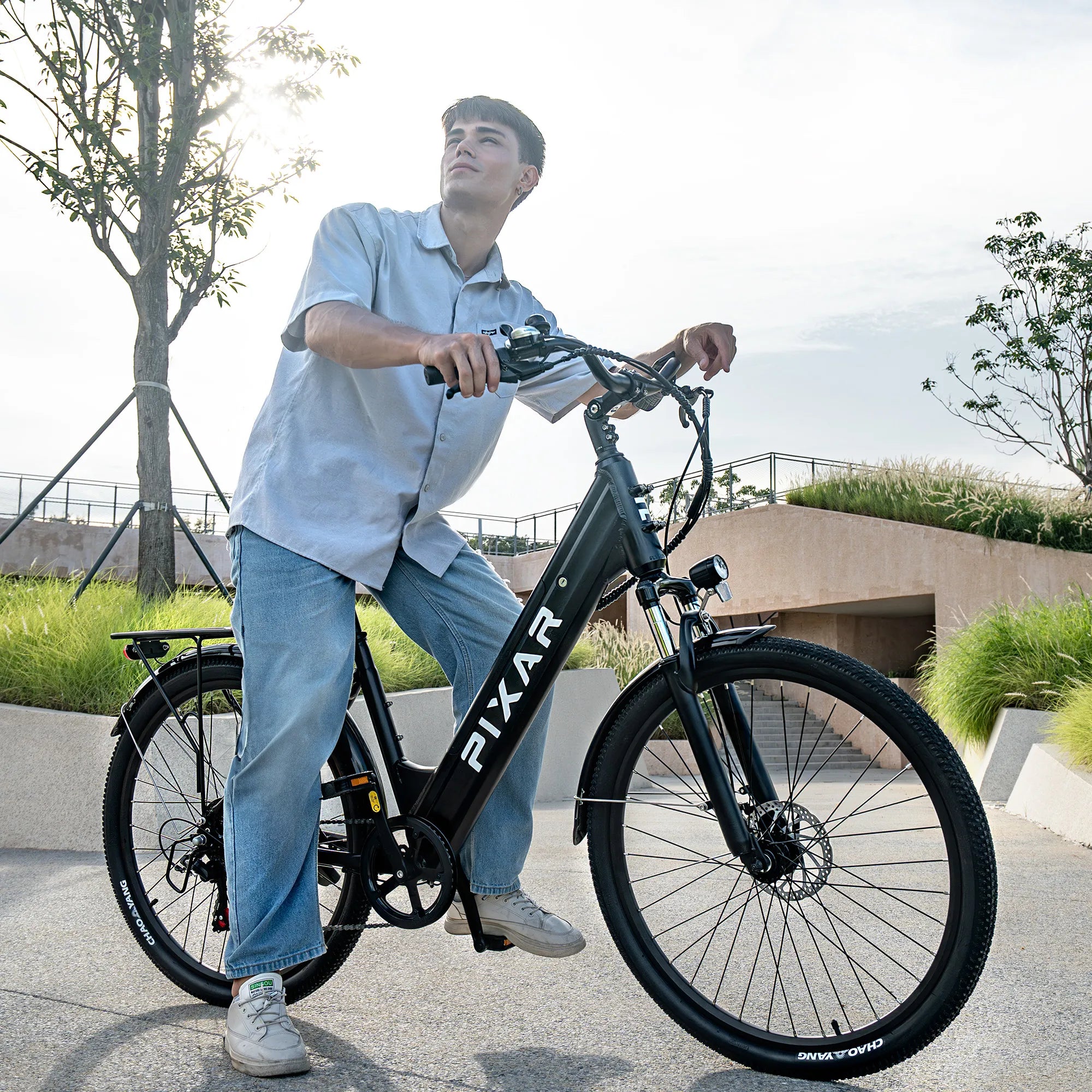Si vous vous êtes déjà demandé pourquoi les vélos électriques coûtent plus cher que les vélos traditionnels, la réponse réside dans leur conception unique et leurs composants clés. Contrairement aux vélos classiques qui reposent uniquement sur vos jambes, les vélos électriques intègrent des composants électroniques et des structures spécialisées, ce qui augmente leur prix. Voyons ce que vous payez réellement et si les vélos électriques pourraient bientôt devenir moins chers.
Le prix plus élevé des vélos électriques n'est pas dû au hasard : il est dû à quatre composants essentiels et coûteux qui rendent leur « conduite sans effort » possible :
Les vélos traditionnels n'ont pas besoin de batteries, mais les vélos électriques en dépendent pour alimenter le moteur (et faciliter vos montées). C'est souvent l'élément le plus coûteux :
- Gamme de prix : 400€–800€ pour une batterie de qualité.
- La plupart utilisent des batteries lithium-ion (durée de vie : 2 à 4 ans), qui équilibrent capacité et durabilité.
- Pourquoi c'est important : Une bonne batterie détermine la distance que vous pouvez parcourir (autonomie) et la fréquence à laquelle vous devrez la remplacer, ce qui vous permet d'économiser de l'argent à long terme.
Un moteur de vélo électrique fonctionnel démarre à quelques centaines d'euros, mais la qualité fait grimper le prix :
- Le type est important : les moteurs à entraînement central (privilégiés pour de meilleures performances sur les collines/routes accidentées) sont plus chers que les moteurs de moyeu : ils sont montés sur mesure et améliorent la qualité de conduite.
- Coûts de main-d'œuvre : les moteurs nécessitent un assemblage spécialisé pour s'intégrer au vélo, ce qui augmente le prix final.
Les vélos électriques pèsent beaucoup plus que les vélos traditionnels (grâce aux batteries et aux moteurs), leurs cadres doivent donc être solides et lumière:
- Coûts des matériaux : les cadres plus légers (pour une conduite plus facile et une meilleure efficacité de la batterie) utilisent des matériaux de première qualité (par exemple, de l'aluminium de haute qualité ou de la fibre de carbone), qui coûtent plus cher que les cadres de vélo standard.
- Objectif de conception : les cadres sont conçus pour supporter un poids supplémentaire (cycliste + équipement) sans compromettre la sécurité, ce qui augmente les coûts de production.
Les vélos électriques ont besoin de pièces plus résistantes et plus fiables pour gérer leur poids et leur puissance supplémentaires, un autre facteur de coût :
- Freins : Contrairement aux vélos traditionnels, les vélos électriques nécessitent des freins capables d'arrêter rapidement un véhicule plus lourd. Les freins haute performance (par exemple, les freins à disque hydrauliques) sont la norme ici, mais plus coûteux.
- Autres pièces : Du câblage durable aux connecteurs résistants aux intempéries, chaque petit composant est conçu pour durer, ce qui ajoute des coûts supplémentaires qui s'additionnent.
L'achat d'un vélo électrique n'est pas une dépense ponctuelle : vous devrez prévoir un budget pour un entretien régulier :
- Recharge : Bon marché (quelques euros par charge seulement), mais à noter car les coûts de l'énergie augmentent.
- Remplacement de la batterie : tous les 2 à 4 ans, vous aurez besoin d'une nouvelle batterie (400 à 800 €) – les batteries de qualité durent plus longtemps, elles constituent donc un investissement initial judicieux.
- Entretien général : les coûts varient (par exemple, mises au point, remplacement des pneus), mais sont globalement similaires à ceux des vélos traditionnels.
À l'heure actuelle, la plupart des vélos électriques coûtent 600 € à 1 700 € : un prix élevé pour un vélo, mais toujours moins cher et plus écologique que les scooters ou les voitures. La bonne nouvelle ? Les prix pourraient baisser.
- Obstacles actuels : les matériaux coûteux et la faible demande générale maintiennent les coûts élevés.
- Tendances changeantes : Partout en Europe, les villes constatent une forte augmentation du nombre d'utilisateurs de vélos électriques (pour les déplacements domicile-travail, pour des raisons de durabilité ou pour le plaisir). La demande croissante entraîne une augmentation de la production, ce qui entraîne généralement une baisse des coûts.
- Perspectives à long terme : comme la plupart des nouvelles technologies, les vélos électriques deviendront probablement plus abordables à mesure qu’ils gagneront en popularité.
Les vélos électriques sont chers pour une bonne raison : chaque composant (batterie, moteur, cadre) est conçu pour offrir une conduite fluide et puissante, que les vélos traditionnels ne peuvent égaler. Certes, c'est un investissement, mais il est rentabilisé : trajets quotidiens sans effort, montées faciles et un moyen de transport plus écologique.















Laisser un commentaire
Ce site est protégé par hCaptcha, et la Politique de confidentialité et les Conditions de service de hCaptcha s’appliquent.